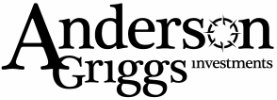|
Executive Summary & Methodology “It is the mark of an educated mind to expect that amount of exactness which the nature of the particular subject admits. It is equally unreasonable to accept merely probable conclusions from a mathematician and to demand strict demonstration from an orator.” -Aristotle Late last month I took on the role of judge, not in a court of law, but in a university competition, the CFA Institute Research Challenge Southern Classic. My task was to choose one of fourteen teams from South Carolina, Georgia and Alabama universities to go on to represent their region in the Americas Regional bracket of the CFA Institute Research Challenge. The challenge gives university students from around the globe an opportunity to gain real-world experience as they assume the role of a research analyst. They prepare a written report on a preselected company including a buy, sell or hold rating. They also present their findings to a panel of judges who listen to the presentations, question the team members, and ultimately choose the top team to represent the region.
Throughout this process, the team members learn to understand what Aristotle meant in the quote above. The young men and women begin to learn that the role of a financial analyst lies somewhere between that of a math wizard and an orator. They must calculate what they believe is the current value of a company and then make a projection of the future value of that company based on the training they have received in business school. Just as importantly, they have to take on the role of an orator and convince a panel of judges to believe they are correct, even though the judges know that current and future values are never 100% correct. Our own market projections are just as equally uncertain. However, unlike those aspiring business students of the CFA Research Challenge, the judges of our predictions are the dollars and life-long savings of people. We have been making these forecasts for many years, and we understand that although the numerical accuracy will be anything less than perfect, they serve well the purpose we require of them. They give us a good indication of the potential investment return common stocks can offer, taking into account all the risks and volatility that come along with them, versus what is offered from lending our money to a bank or the U.S. Treasury. Most forecasts are made based on some form of historical study. A forecaster may be searching for a time in the past where economic or value factors were similar to today’s time. Others will use some magical mathematical formula that looks impressive, or a simple chart based on momentum, i.e. what goes up continues to go up, or what goes down will continue to go down. No matter which approach is used, all of us making a forecast of the future returns of markets have something going for us: the public’s acceptance of our failure. After all, we all know no one can tell the future! So remember our estimation of future returns is used only as a guide to allocate our minimal dollars between an ownership interest in an operating business or lending our money in return for a little interest. Our approach is based on the legal standard that an owner of a business is entitled to all the assets owned by the business less its liabilities, and all the future cash generated by those assets. This future cash can be paid out to us as dividends, it can be reinvested in the business to increase the amount of cash the business can provide us in the future, or it can be used to pay down debt used to acquire assets. All three of these reward us, the owners. You will notice that our projections are based on business fundamentals, with only one reference to price, the current price. As we all know, it is the emotions of buyers and sellers that set the price every day. A conservative investor should pay attention to these emotional price swings only for the purpose of buying low and selling high. The tables in Appendix A and B may look confusing to you, but they give us a basis for a projection of both the level of the market five years into the future and of the expected returns in the form of dividends and growth of capital over time. Beware of taking these at face value, however. We cannot evaluate the state of human emotions, the “price setter,” for any time period other than today. As we all know, the ability to invest directly in an index is nearly impossible. What is easily accomplished by all investors is to own a near substitute, an opened ended index mutual fund, or an Exchange Traded Fund (ETF) that is designed and maintained to closely resemble the underlying index. Since 1998 we have been able to use the data provided by the sponsors of ETFs to calculate our estimates. We will reference the symbols for the underlying ETFs where needed. Given these caveats our projections would indicate the following: Our estimated return potential (Compounded Annual Growth Rate) for holding the S&P 500, S&P 400, and S&P 600 including dividends, ending five years from February 20th, 2014 are: S&P 500 (SPX): 9.13% S&P 400 (MDY): 7.44% S&P 600 (IJR): 6.34% We update our projections weekly. We not only complete this work for the S&P 500, S&P 400, and the S&P 600, but we also calculate an estimated return potential for each major industry sector. The constituents of each sector are companies that are currently included in the S&P 500 and whose industry is assigned by Standard & Poor’s. Our calculated return potential (Compounded Annual Growth Rate) of each sector, ending five years from February 20th, 2014 are: Consumer Discretion (XLY): 6.52% Industrials (XLI): 8.90% Consumer Staples (XLP): 9.79% Materials (XLB): 10.33% Energy (XLE): 10.82% Technology (XLK): 11.39% Financials (XLF): 7.08% Utilities (XLU): 11.29% Health Care (XLV): 8.39% What is important to you is that these models and estimated returns are used as a guide in the overall direction of your portfolio. We use these numbers to compare one alternative to other alternatives, and this is the real value of the work. Every day the market offers us a choice of where we can invest. By producing a quantitative study based on sound theory, a choice as to where to deploy our funds can be made. For most of us, the primary question we ask ourselves is, how much of my investable funds should I expose to common stocks (or some other form of equity ownership) versus lending my funds and being paid an interest payment for their use? The Treasury yield curve is a helpful guide. Maturity 1 mo 3 mo 6 mo 1 yr 2 yr 3 yr 5 yr 7 yr 10 yr 20 yr 30 yr YTM 0.02% 0.05% 0.08% 0.12% 0.34% 0.72% 1.57% 2.20% 2.76% 3.44% 3.73% The great Benjamin Graham was well known for his fundamental approach to security selection. He also recognized that an individual portfolio will represent just a little slice of the entire stock market. Because prices are set by the whims of the investing public, prudence requires each individual investor to have some knowledge of the fluctuations in prices and their relationship to dividends, growth of capital, and the current level of interest rates throughout history. Our own knowledge of this relationship, obtained through our 30 plus years of experience and over a century of past data openly shared by Standard & Poor’s and Dow Jones, causes us to be concerned today. Our largest concern has mostly to do with the relationship between interest rates and market prices. With such low returns available in the mostly conservative credit markets, many people have purchased common stocks when they would never have done so if interest rates were close to normal. And by normal, I am referencing the long-term average of greater than 5% for the 2 Year Treasury Rate. With any significant rise in interest rates, we could easily imagine a mass exodus out of the market. This buying of common stocks because of low interest rates has raised the basic price level to one of the highest we have calculated relative to dividends and capital growth since we began these studies in 1998. That by no means indicates that the price levels of common stocks could not rise another 100% in the next five years. But the probability of this, at least in our minds, is highly unlikely. This brings us to the conclusion that a conservative balanced investor should not be fully invested in the market at today’s prices. Yet, given that interest rates do not provide any returns, the option of holding cash, FDIC insured Certificates of Deposits or Treasuries with short maturities seems more like punishment than a prudent investment approach. Even so, a good portion of cash, from 20% to 40% of the total portfolio, is recommended both for its protective nature and for its opportunistic qualities. If interest rates rise unexpectedly due to an event yet to unfold, market prices for both stocks and bonds will decline, creating bargains for stock investors and increased cash flow for credit investors. If they do not increase this year or next, we will be limiting our returns. A conservative investor should be willing to take this trade-off. Until next time, Kendall J. Anderson, CFA For more detailed information, please contact us at [email protected] for a copy of Appendix A: S&P 500 – S&P 400 – S&P 600 and Appendix B: Sectors. Comments are closed.
|
Kendall J. Anderson, CFA, Founder
Justin T. Anderson, President
Categories
All
Archives
April 2024
|
|
Common Sense Investment Management for Intelligent Investors
|



 RSS Feed
RSS Feed